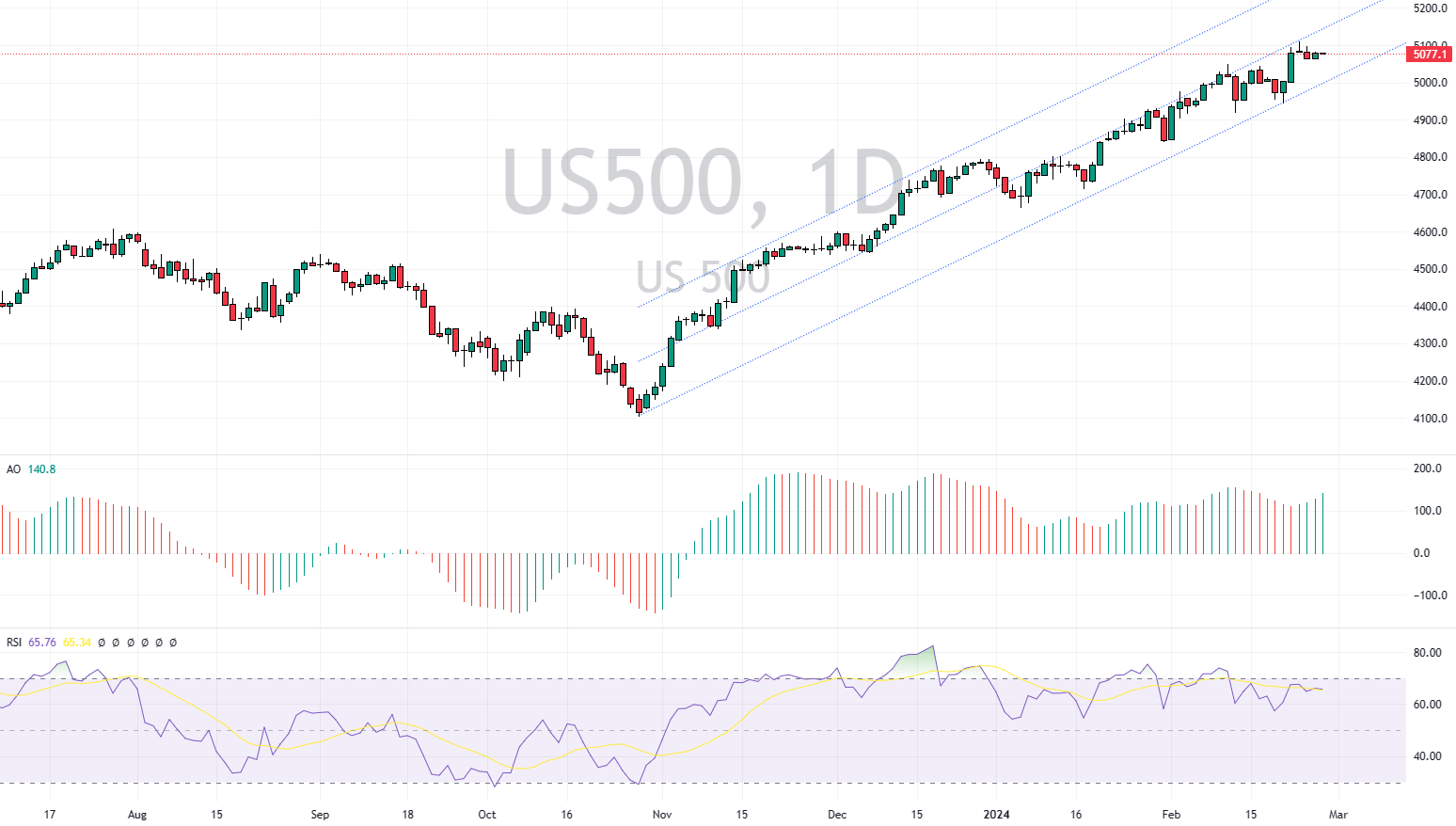US 500 Index Analysis – February-28-2024
US 500 Analysis – The U.S. stock market showed little movement early Wednesday, reflecting traders’ cautious stance in anticipation of the upcoming Personal Consumption Expenditures (PCE) inflation data expected later in the week. This hesitation follows a day of mixed outcomes in the major stock averages, highlighting the market’s uncertainty. Adding context, the PCE inflation data is a significant economic indicator that the Federal Reserve closely monitors to guide monetary policy decisions.
This data can significantly influence market trends, affecting consumer spending and inflation expectations. Meanwhile, companies like eBay and Urban Outfitters made headlines with their post-market activities, impacting investor sentiment and market dynamics.
US 500 Index Analysis: Earnings and Expectations
In extended trading, eBay announced a 4% increase in its quarterly dividend. It revealed plans to repurchase an additional $2 billion in stock, signaling confidence in its future financial health and potentially attracting more investors. On the contrary, Urban Outfitters reported weaker-than-expected quarterly results, leading to a significant 11% drop in its stock price.
These developments underscore the impact of corporate earnings on stock valuations and investor confidence. They also highlight the varying fortunes of different retail sectors, reflecting broader economic trends and consumer behavior changes.
Tech Sector Performance and Economic Indicators
The performance of mega-cap technology companies was a mixed bag, with Tesla, Apple, and Meta Platforms experiencing gains, while Nvidia and Amazon faced declines. This divergence indicates the challenges and opportunities facing different segments within the tech industry, from supply chain issues to shifts in consumer demand.
Additionally, the significant 6.1% drop in January’s durable goods orders, marking the most considerable decrease since April 2020, raises concerns about the manufacturing sector’s health and broader economic stability. This downturn could reflect more significant economic trends, such as reduced consumer spending or supply chain disruptions, and warrants investor attention as it may signal future market directions.







